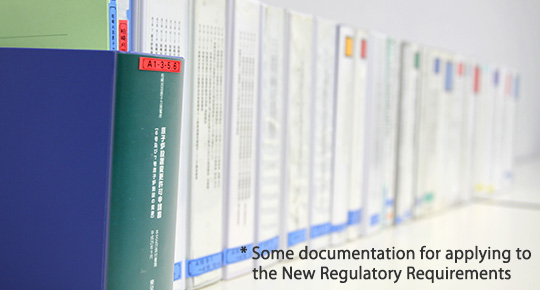What are the New Regulatory Requirements?
New Regulatory Requirements were established by the government in July 2013 to determine the advisability of building and operating nuclear facilities.
Based on the lessons learned from the accident at Fukushima Daiichi Nuclear Power Station and knowledge gathered from within Japan and overseas, strengthened measures were adopted against earthquakes and tsunamis. New measures were also added for other natural disasters, major accidents, and intentional plane crashes as terrorist attacks.
As a result, they require a far higher level of safety measures than the former regulatory requirements.


Main review items for Units 6 and 7 of
the Kashiwazaki-Kariwa Nuclear Power Station
Each item is reviewed by the Nuclear Regulation Authority to check whether the nuclear facilities comply with the New Regulatory Requirements.
-
- Response to terrorist attacks
- Response to intentional plane crashes*1
- Major accident response facilities(response to major accidents)
- Probabilistic risk assessments
- Selecting accident sequences
- Effectiveness assessments(Reactor core damage prevention measures)
- Effectiveness assessments(Primary containment vessel damage prevention measures)
- Effectiveness assessments(Fuel damage prevention measures in the spent fuel storage pools)
- Effectiveness assessments(Fuel damage prevention measures during reactor shutdowns)
- Analysis codes
- Reactor control room
- Emergency response center
- Access routes
- Measures for hydrogen generation in the reactor buildings
- Filter vents
- Technical competence for major accidents
-
- Design basis target facilities(prevention of major accidents)
- Impact assessments of external fires and countermeasures
- Selecting target volcanoes
- Measures for volcanoes
- Impact assessments of tornadoes and countermeasures
- Impact assessments of other natural phenomena and countermeasures
- Fire protection measures
- Measures for internal flooding
- Prevention of erroneous operations
- Evacuation passages for safety
- Single failure of static equipment
- Sharing of safety systems
- Countermeasure facilities for station blackouts
- Fuel assemblies handling and storage facilities
- Reactor coolant pressure boundaries*2
- Protection circuits for safety
- Monitoring and measuring devices
- Power-supply facilities for safety
- Telecommunication equipment
-
- Response to earthquakes and tsunamis
- Fault activities around the power station
- Fault activities within the power station
- Seismic motion
- Seismic-resistant design
- Stability of ground and slope
- Tsunami
- Tsunami-resistant design
*1 Separate reviews will be conducted for specific major accident response facilities.
*2 The boundaries define the areas where equipment such as pipes reaches the same pressure level as pressure vessels during normal operations.



